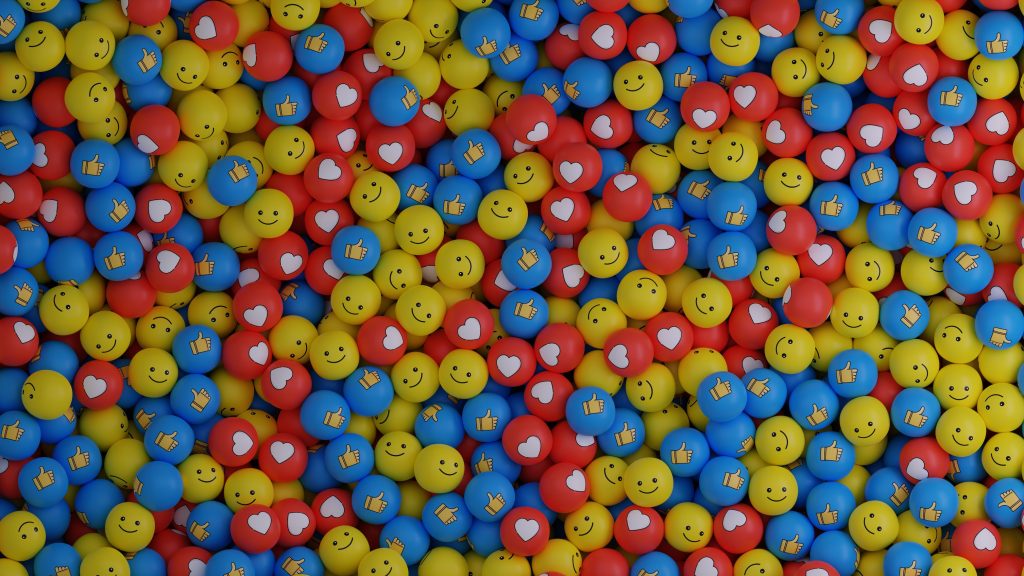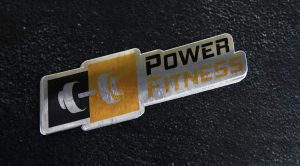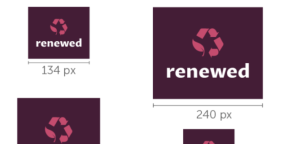Are you starting a new business or looking to rebrand your existing one? One of the most important aspects of your brand identity is your logo. A good logo can make a lasting impression on potential customers and help your business stand out from the competition.
But what makes a good logo? There are several design principles to consider when creating a logo. Typography is a crucial element, as using readable and web-friendly fonts can make your logo appear professional and polished. Color choice is also important, as certain colors can evoke specific emotions and associations. Additionally, a good logo should be scalable and versatile, able to be used on a variety of mediums from business cards to billboards.
In this article, we will explore the key design principles of good logo design and provide tips on how to create a logo that accurately represents your brand and resonates with your audience. Whether you’re designing your own logo or working with a professional designer, understanding the fundamentals of good logo design can help ensure your brand identity is strong and memorable.
Importance of Good Logo Design
Your logo is the first impression that your business makes on your potential customers. It is the face of your brand and should represent your business’s values, mission, and personality. A good logo design is crucial for your business’s success because it can make or break your brand’s reputation.
A well-designed logo can help your business in several ways. Here are some reasons why good logo design is important:
1. Builds Brand Recognition
Your logo is the visual representation of your brand. A well-designed logo can help your business stand out from the competition and make a lasting impression on your customers. A recognizable logo can help people remember your brand and create a sense of familiarity and trust.
2. Establishes Brand Identity
Your logo should reflect your brand’s personality and values. A good logo design can help you establish your brand’s identity and communicate your message to your target audience. It can help you differentiate your business from your competitors and create a unique brand image.
3. Creates Consistency
A good logo design can help you create consistency across all your marketing materials. By using your logo consistently across all your business’s marketing materials, you can create a cohesive brand image and make it easier for people to recognize your brand.
4. Increases Brand Loyalty
A well-designed logo can help you create a strong emotional connection with your customers. By creating a logo that resonates with your target audience, you can build brand loyalty and create a sense of community around your brand.
5. Boosts Brand Recall
A good logo design can help you increase brand recall. By creating a memorable logo, you can make it easier for people to remember your brand and recall it when they need your products or services.
In conclusion, a good logo design is crucial for your business’s success. It can help you build brand recognition, establish your brand identity, create consistency, increase brand loyalty, and boost brand recall.
Elements of a Good Logo Design
When it comes to designing a logo, there are certain elements that make a logo stand out and memorable. Here are the essential elements that every good logo design should have:
Simplicity
One of the most important elements of a good logo design is simplicity. Your logo should be easy to recognize and remember, even when it’s seen for just a few seconds. A simple design will also make it easier to reproduce on different mediums, such as business cards, websites, and promotional materials.
Relevance
Your logo should be relevant to your brand and its values. It should represent what your brand stands for and what it offers. For example, if your brand is all about eco-friendliness, your logo should reflect that through the use of green colors or nature-inspired imagery.
Versatility
A good logo design should be versatile enough to work in different sizes and mediums. Your logo should look great whether it’s printed on a billboard or a business card. It should also be easily recognizable whether it’s displayed in color or black and white.
Timelessness
Your logo should be designed to stand the test of time. You don’t want to redesign your logo every few years because it’s outdated or no longer relevant. A timeless logo design will help your brand maintain consistency and recognition over the years.
In summary, a good logo design should be simple, relevant, versatile, and timeless. By incorporating these elements into your logo design, you can create a logo that will effectively represent your brand and leave a lasting impression on your audience.
Color Theory in Logo Design
As you design a logo, one of the most important decisions you will make is the color palette. Colors can evoke emotions, convey messages, and create a memorable brand identity. Understanding color psychology and choosing the right color palette can make all the difference in creating a successful logo.
Understanding Color Psychology
Colors can have a powerful impact on our emotions and behaviors. Here are some common associations with different colors:
- Red: passion, energy, excitement
- Orange: warmth, friendliness, creativity
- Yellow: optimism, happiness, clarity
- Green: growth, nature, health
- Blue: trust, reliability, calmness
- Purple: luxury, creativity, spirituality
- Black: sophistication, power, elegance
- White: purity, simplicity, cleanliness
Keep in mind that these associations can vary depending on cultural context and personal experiences. For example, in some cultures, white is associated with mourning instead of purity.
Choosing the Right Color Palette
When choosing a color palette for your logo, consider the emotions and messages you want to convey. You can use a monochromatic color scheme, which uses variations of a single color, or a complementary color scheme, which uses colors that are opposite each other on the color wheel.
It’s also important to consider the context in which your logo will be used. Will it be primarily on a website, in print, or on a physical product? Different colors may look different depending on the medium, so make sure to test your color palette in different contexts.
Finally, consider the colors used by your competitors and in your industry as a whole. You want your logo to stand out and be memorable, so choosing a color palette that differs from the norm can help you achieve that.
In conclusion, color theory is an essential aspect of logo design. By understanding color psychology and choosing the right color palette, you can create a logo that effectively communicates your brand’s message and identity.
Typography in Logo Design
Typography is a crucial element of logo design. It can make or break the success of your logo. A well-chosen typeface can reinforce your brand’s voice and values, while a wrong one can turn off your target audience.
Choosing the Right Font
When choosing a font for your logo, consider the following factors:
- Personality: Every typeface has its own personality and gives its own impressions. Choose a font that aligns with the personality of your brand.
- Legibility: Your logo should be easy to read at all sizes and distances. Avoid overly decorative or complex fonts that can be difficult to read.
- Versatility: Your logo will be used in various contexts, such as on websites, business cards, and billboards. Choose a font that is versatile and works well in different sizes and mediums.
- Uniqueness: Your logo should stand out from your competitors. Choose a font that is distinctive and memorable.
Balancing Typography and Imagery
A good logo strikes a balance between typography and imagery. Here are some tips to achieve that:
- Hierarchy: Use typography to create a hierarchy of information in your logo. The most important information should be more prominent than the less important information.
- Integration: Integrate typography and imagery seamlessly. The two should work together to create a cohesive and memorable logo.
- Simplicity: Keep your logo simple and avoid clutter. Too much typography or imagery can be overwhelming and confusing.
- Consistency: Use the same typography and imagery across all your branding materials. This creates consistency and reinforces your brand identity.
In summary, typography is a critical component of logo design. Choosing the right font and balancing typography and imagery are essential to creating a successful logo that represents your brand effectively.
Logo Design Process
Creating a good logo requires a well-defined process, which typically includes research, sketching, prototyping, and finalizing. In this section, we will explore each of these stages in detail.
Research
The first step in designing a logo is to research the company, its competitors, and the industry. This helps you understand the values, goals, and target audience of the brand you are designing for. You can also gather inspiration from other logos and design trends.
Sketching
Once you have a clear understanding of the brand, it’s time to start sketching logo concepts. Sketching allows you to quickly iterate and explore different ideas without investing too much time or resources. It’s important to keep the design simple, memorable, and unique.
Prototyping
After you have a few promising sketches, it’s time to create digital prototypes using vector software. This allows you to refine the design and experiment with colors, typography, and other visual elements. It’s important to keep in mind the scalability of the logo, as it needs to look good in different sizes and formats.
Finalizing
Once you have a refined prototype, it’s time to finalize the logo design. This includes getting feedback from the client and making any necessary revisions. It’s important to ensure that the logo is versatile, timeless, and reflects the brand’s identity. Once the final design is approved, you can prepare and deliver the logo files in various formats.
By following a well-defined logo design process, you can create a logo that effectively communicates the brand’s values and resonates with its target audience.
Common Mistakes in Logo Design
When it comes to logo design, there are a few common mistakes that designers often make. Avoiding these mistakes can help ensure that your logo stands out and effectively represents your brand.
Overcomplication
One of the most common mistakes in logo design is overcomplicating the design. It’s important to remember that a logo should be simple and easy to recognize. If your logo has too many elements or is too complicated, it can be difficult for people to remember and recognize. Keep in mind that a simple design can often be more effective than a complex one.
Following Trends Blindly
Another mistake that designers often make is following trends blindly. While it’s important to stay up-to-date with the latest design trends, it’s also important to remember that these trends can quickly become outdated. Instead of following every trend, focus on creating a timeless design that will stand the test of time. This will ensure that your logo remains relevant and effective for years to come.
Ignoring Target Audience
Finally, it’s important to remember your target audience when designing a logo. Your logo should appeal to your target audience and effectively represent your brand. If your logo doesn’t appeal to your target audience, it may not be effective in attracting new customers or building brand recognition. Take the time to research your target audience and create a logo that speaks to them.
In summary, avoiding common mistakes in logo design can help ensure that your logo effectively represents your brand and stands out from the competition. Keep your design simple, focus on creating a timeless design, and remember your target audience to create a logo that effectively represents your brand.
Conclusion
Congratulations! You now have a solid understanding of the essential elements of good logo design. Remember that a logo is the face of your brand, and it should be simple, smart, and fresh. It should also align with your industry or service and feel appropriate to your target audience.
When designing a logo, always start with a clear concept and a well-defined design process. This will help you create a logo that is unique, memorable, and effective in conveying your brand message.
Here are a few key takeaways to keep in mind:
- A good logo should be simple, memorable, and versatile.
- It should be scalable, so it can be used in various sizes and formats.
- It should be easy to recognize and distinguish from other logos.
- It should align with your brand message and target audience.
- It should be designed using a clear process that includes research, sketching, refining, and testing.
Remember that designing a good logo takes time and effort, but it’s worth it in the long run. A well-designed logo can help you stand out in a crowded market, attract more customers, and build a strong brand identity. So, take your time, be creative, and have fun!
Marietta Arnold is a branding and design enthusiast who draws inspiration from hobbies like hiking, photography, and art exploration. With a background in graphic design, she shares insights on branding strategies and logo design trends. Stay updated with Marietta’s work for the latest in branding and design.



